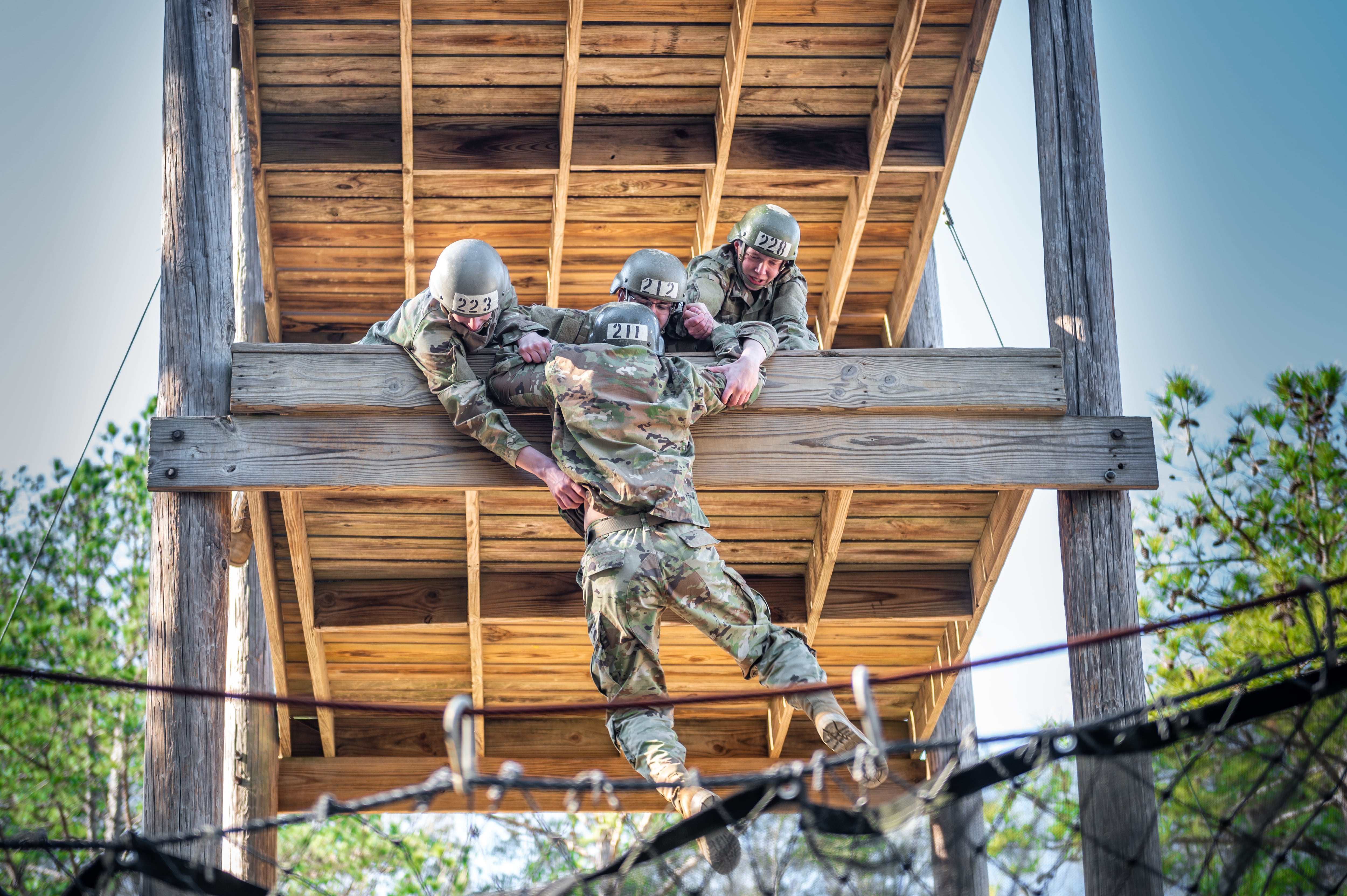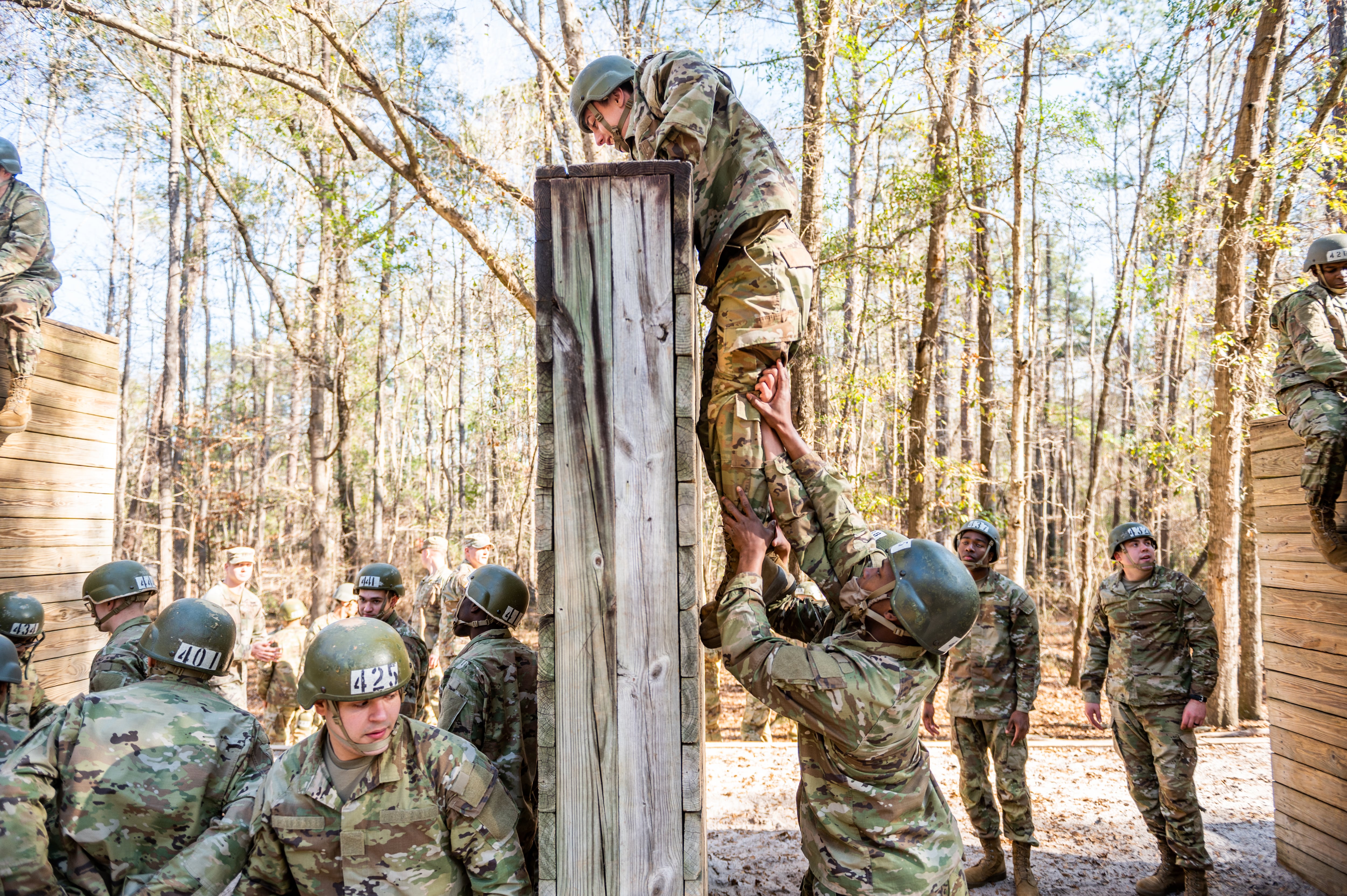The Army will establish a pre-basic training preparatory course at Fort Jackson, South Carolina, that will offer 90 days of training to prospective troops who don’t meet aptitude test or body fat standards to start boot camp, service officials announced Tuesday afternoon.
It is the Army’s most ambitious effort yet to address a massive recruiting shortfall.
Army Times reported July 18 that the Army was preparing to launch a prep course at the South Carolina post under training cadre from 1st Battalion, 61st Infantry, and had started diverting standard trainees to other installations to make room for the prep course troops.
RELATED

The service acknowledged last week that its recruiting crisis means it will miss its end strength goal by approximately 10,000 troops in fiscal 2022, with an estimated drop to around 466,400 soldiers.
The Army doesn’t see conditions improving soon either. In a memo discussing the recruiting crisis, Army Secretary Christine Wormuth and Chief of Staff Gen. James McConville said the Army end strength “may further decrease to approximately [445,000 to 452,000] by the end of [fiscal 2023].”
Just a few years ago the Army was trying to build a 500,000-strong active duty force by the end of the decade.
Officials explained Tuesday that the move to establish the Future Soldier Preparatory Course was in direct response to the recruiting shortfall. They also argued that it has the potential to help the service mitigate two trends in the applicant pool: worsening obesity rates and declining scores on the Armed Forced Qualification Test.
Who is eligible for the prep course? How will it work?
The Army has identified three groups of prospective soldiers who it wants to participate in the prep course pilot, which will have two separate programs: one for academic improvement, and one for fitness improvement.
- Applicants with an AFQT score of 21 to 31, which places them in the upper portion of aptitude Category IV, can participate in the academic track and attempt to improve their score to Category IIIB. The service can only have 4% of each recruiting cohort with Category IV test scores.
- Applicants who enlist with 2-6% more body fat than the military standard for their gender and age can participate in the fitness course.
- Applicants with an AFQT score of 42 to 49 can “voluntarily participate” in both of the prep course programs in order to climb from aptitude Category IIIB to IIIA, which would expand their job selections.
At Jackson, a combination of drill sergeants, Army skills instructors and civilian instructors will lead the courses, said post commander Brig. Gen. Patrick Michaelis. But their focus will be on teaching the participants — who will be there on 09M delayed training contracts — rather than the rougher treatment they might receive when they move on to basic.
Those who don’t make the cut will be chaptered out of the Army via entry level separation, meaning they can rejoin in six months if they meet standards.
Troops in the fitness track will aim to lose 1-2% body fat per month, Michaelis said. They can leave the prep course and join a basic training unit once they are within 2% of the standard for their age and gender.
“We’ll take a holistic health and fitness approach, exposing these trainees to diet, exercise, resilience and reflection while they’re here,” said Michaelis. “We’ve got dietitians and athletic trainers dedicated to each individual’s personal journey.”
RELATED
The academic track will be modeled after the Basic Skills Education Program, a long-running model that the service has used to help already-enlisted soldiers improve their aptitude scores.
Every three weeks they will retest to see if they now meet the Army’s standards, though a limited number of Category IV troops may be allowed to remain.
Army Recruiting Command’s top officer, Maj. Gen. Kevin Vereen said that troops who successfully improve their test scores will be able to “renegotiate” their contracts to select a job.
Service officials argue that previous and existing programs show that the new prep course is likely to work. Basic Skills Education Program data suggests that three months of classes can help improve AFQT scores up to 10 points, and a similar fitness pilot for recruits with 2% extra body fat has been underway since 2019.
Why now?
Army Training and Doctrine Command deputy commander Lt. Gen. Maria Gervais said that a decline in aptitude test scores, approximately 9% on average, since the beginning of the COVID-19 pandemic led the service to realize their existing practices wouldn’t be enough to meet recruiting goals.
Vereen, the USAREC commander, pointed to long-term factors like increasing childhood obesity and other medical issues as having decreased the Army’s margin for error in recruiting.
Experts previously spoke with Army Times about other factors that might be exacerbating the recruiting shortfall: more detailed medical screenings, poor marketing practices, low civilian unemployment, the COVID-19 vaccine mandate and increasing politicization of the military.
But the 9% average drop in test scores was one variable too many — and one the service didn’t understand at first, according to officials.
Gervais explained that recruiting measures implemented in early 2022 — increased bonuses, expanded contract options and more — did “not quite [have] the impact” the Army had hoped. That’s when the service began to “dive deeper” and learned the score decline was choking off the recruiting pipeline, Gervais added.
“We were not necessarily seeing the academic piece until this year,” Vereen said.
It’s not clear why the service didn’t take more drastic action earlier, though.
The Army entered fiscal 2022 with less than 6,500 recruits in its delayed entry pool. According to a 2019 RAND report, the service prefers to enter new fiscal years with a bench of 15,000 to 20,000 signees awaiting basic training.
Will the prep course solve the recruiting crisis?
Experts who spoke with Army Times in early July were encouraged the service was planning a prep camp.
“There’s potentially some merit there because sometimes somebody needs a fire under their feet and a structured program to help them,” said Dr. Beth Asch, a senior economist at Rand Corp., about the proposed fitness track. “These people are young, so their habits are more malleable, and this is an opportunity to change their lifestyle and do something positive for their career — and help the Army, too.”
Asch was more skeptical when asked about early proposed versions of the academic track, though she thinks it makes sense as “a pilot test...where it can be assessed from a research standpoint.”
Retired Lt. Gen. Tom Spoehr of the Heritage Foundation “love[s] the idea” of a fitness preparatory camp.
However, Spoehr said in early July that he thinks a more efficient version of the initiative could let applicants train near their homes and not be entirely on the Army payroll.
According to TRADOC’s Gervais, the prep course pilot will cost around $4 million, and the service has identified 2,000 applicants who could be a good fit.
Army officials say that they will evaluate data from the program in the fall to decide whether to make the course permanent. Gervais said the service will also consider expanding the prep course to other training sites to increase its capacity, depending on demand and results.
Davis Winkie covers the Army for Military Times. He studied history at Vanderbilt and UNC-Chapel Hill, and served five years in the Army Guard. His investigations earned the Society of Professional Journalists' 2023 Sunshine Award and consecutive Military Reporters and Editors honors, among others. Davis was also a 2022 Livingston Awards finalist.





